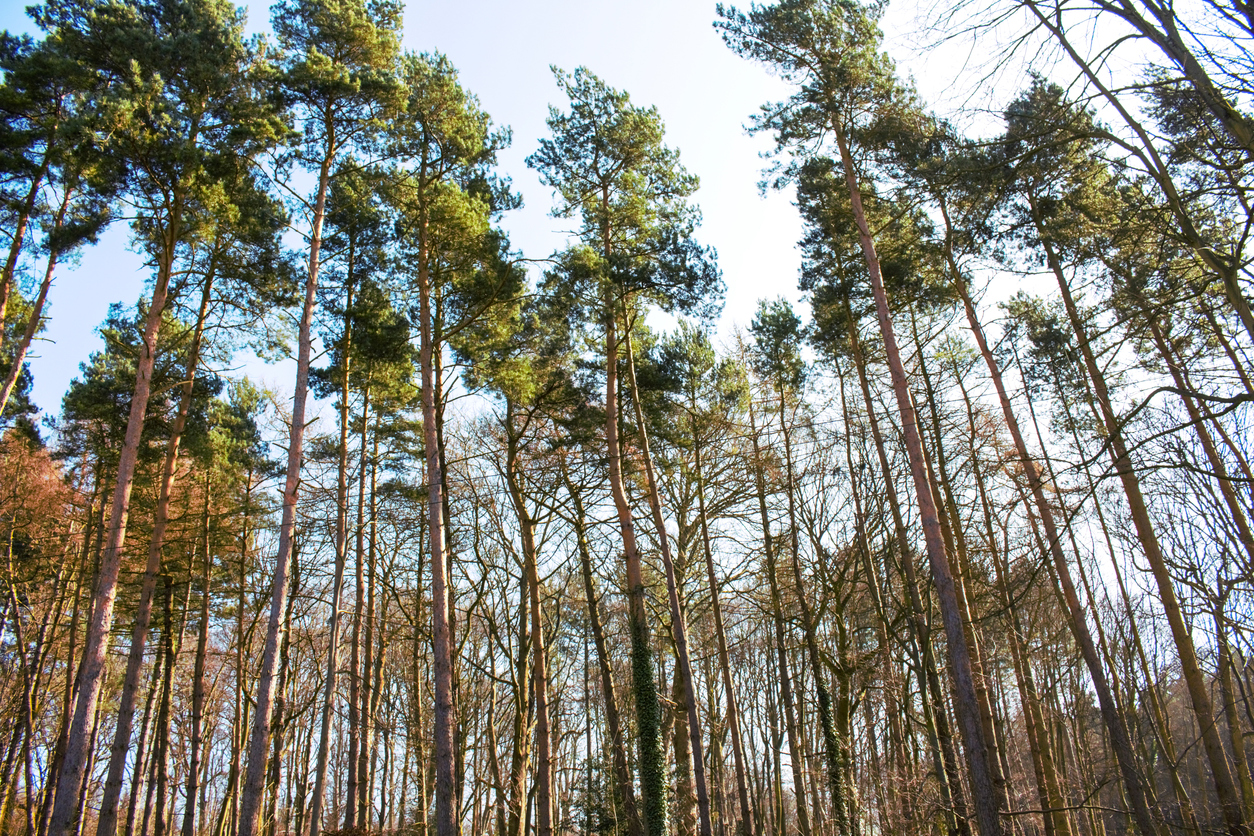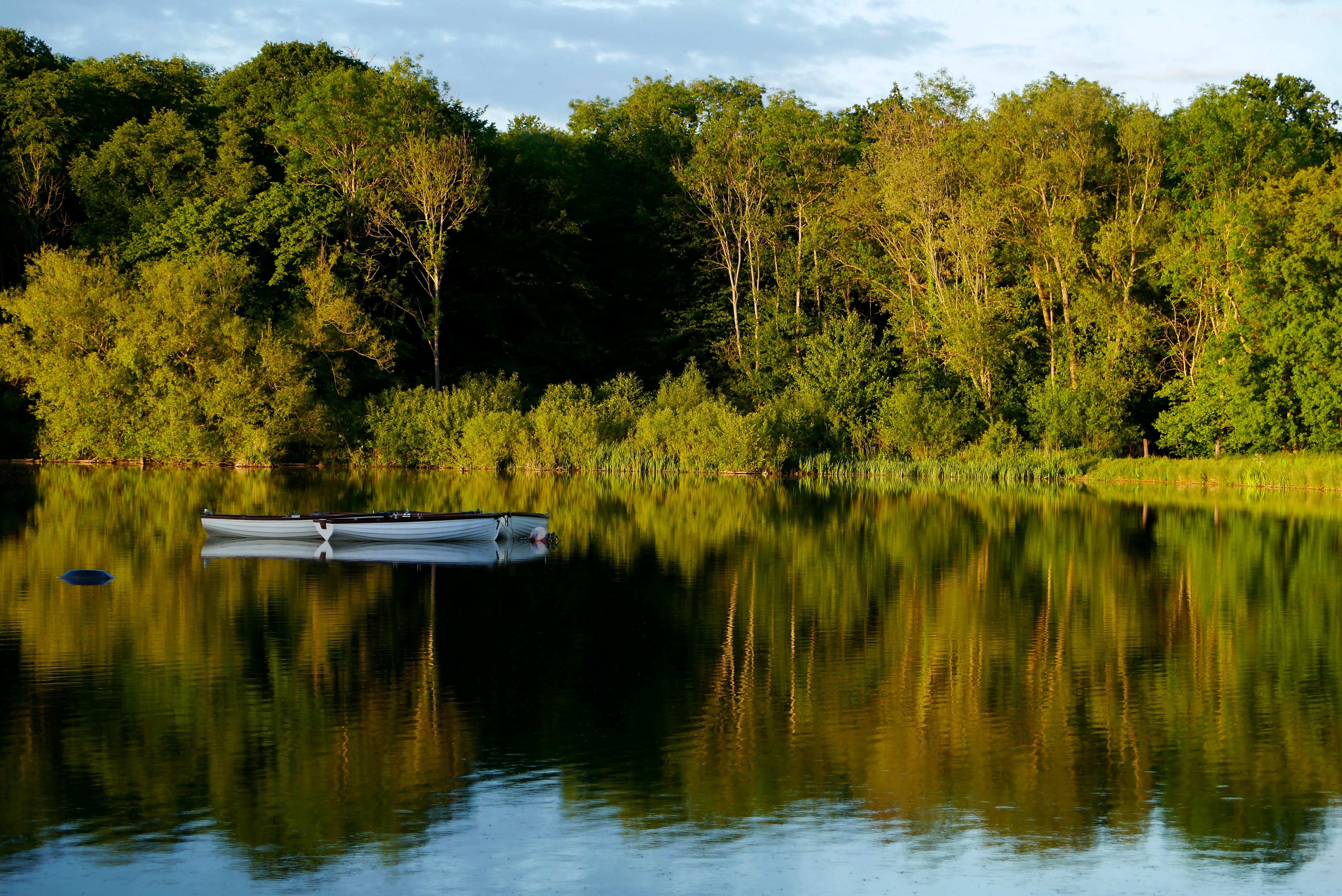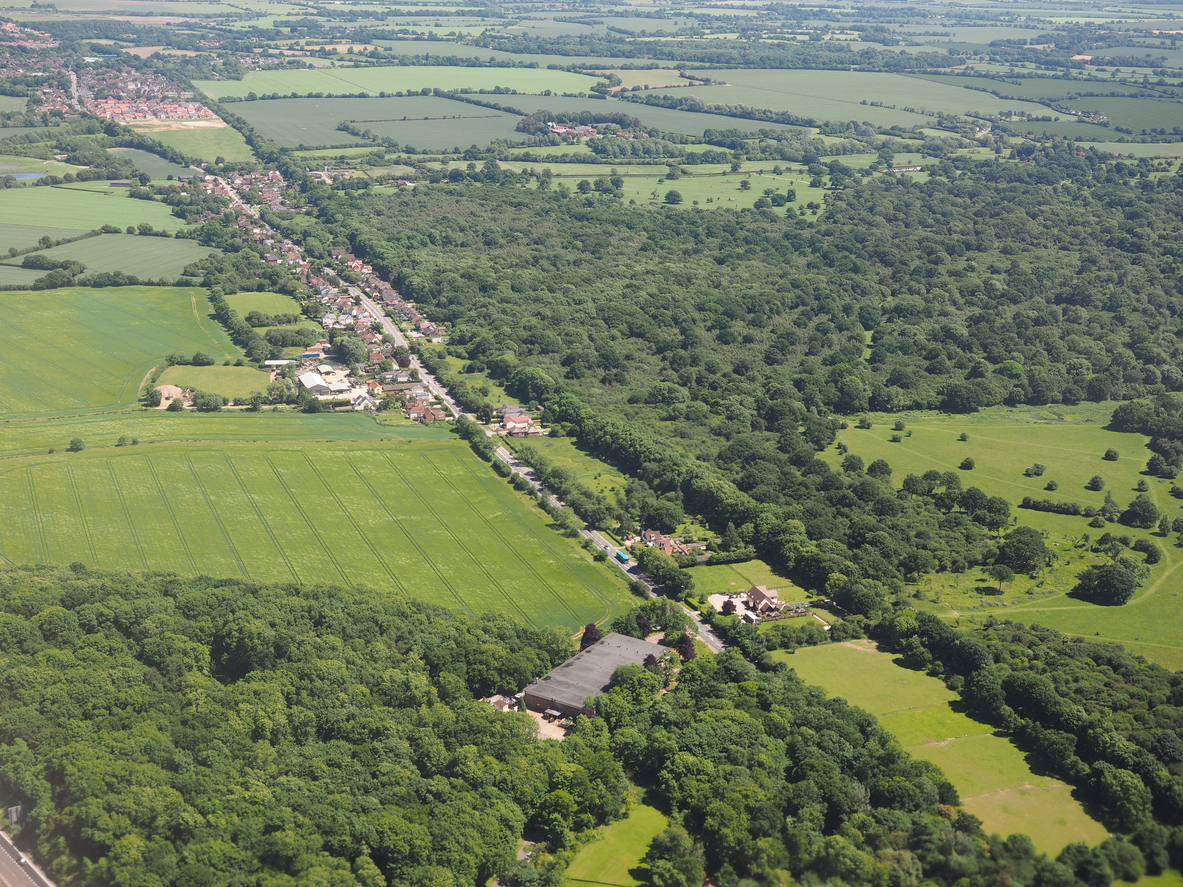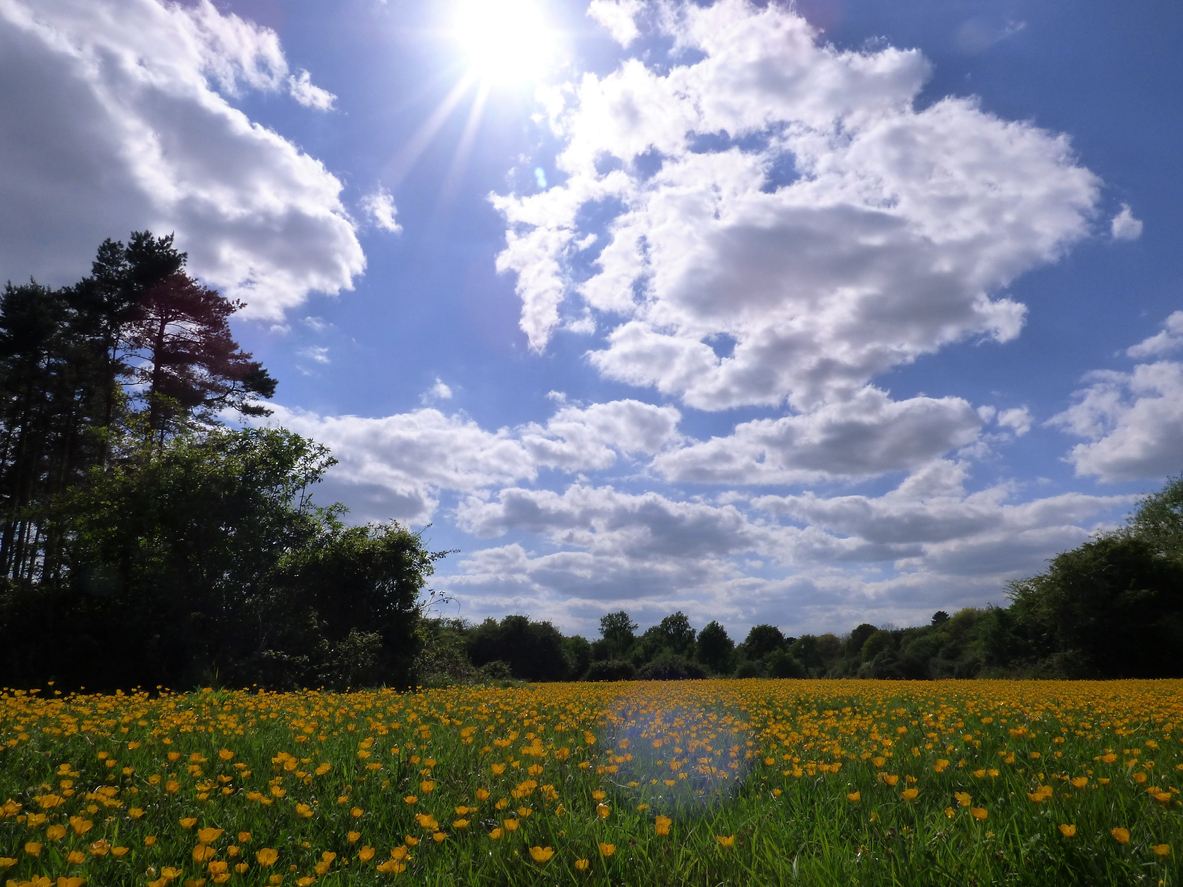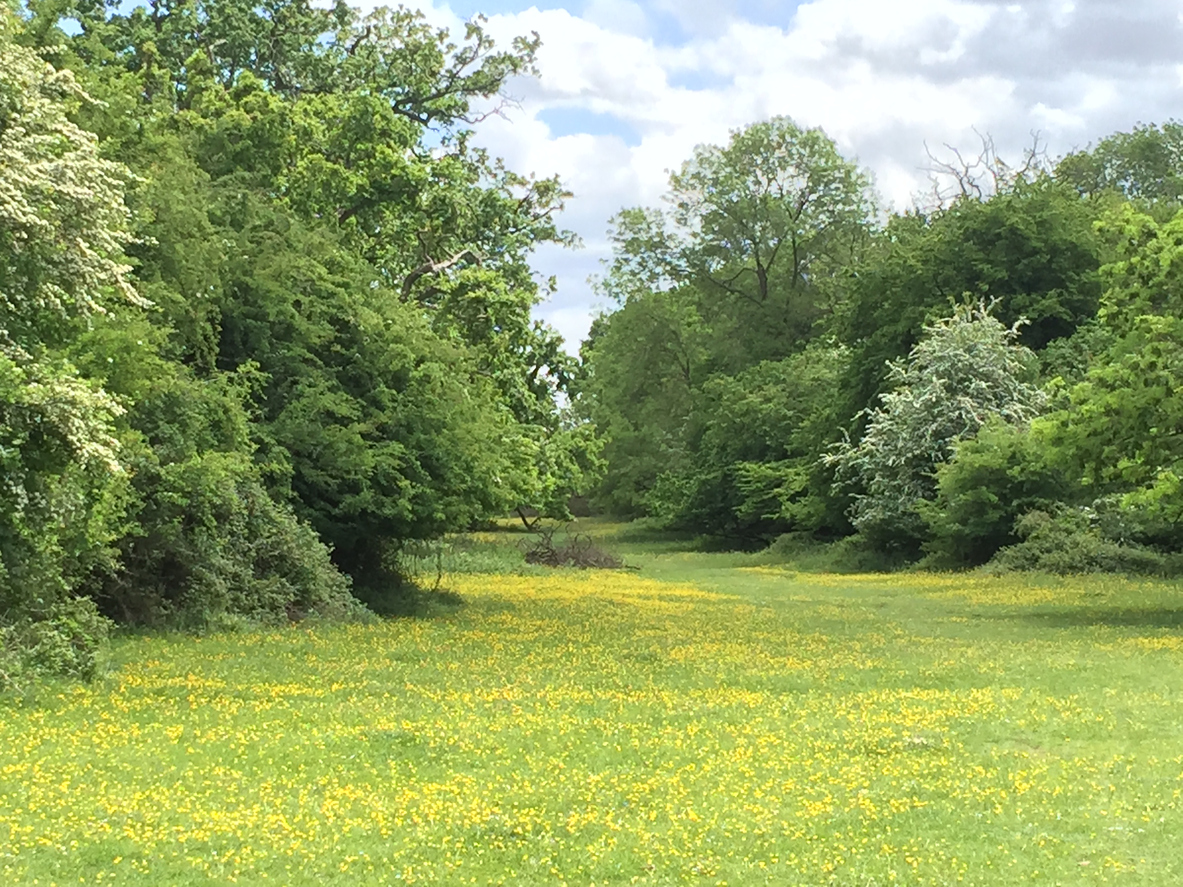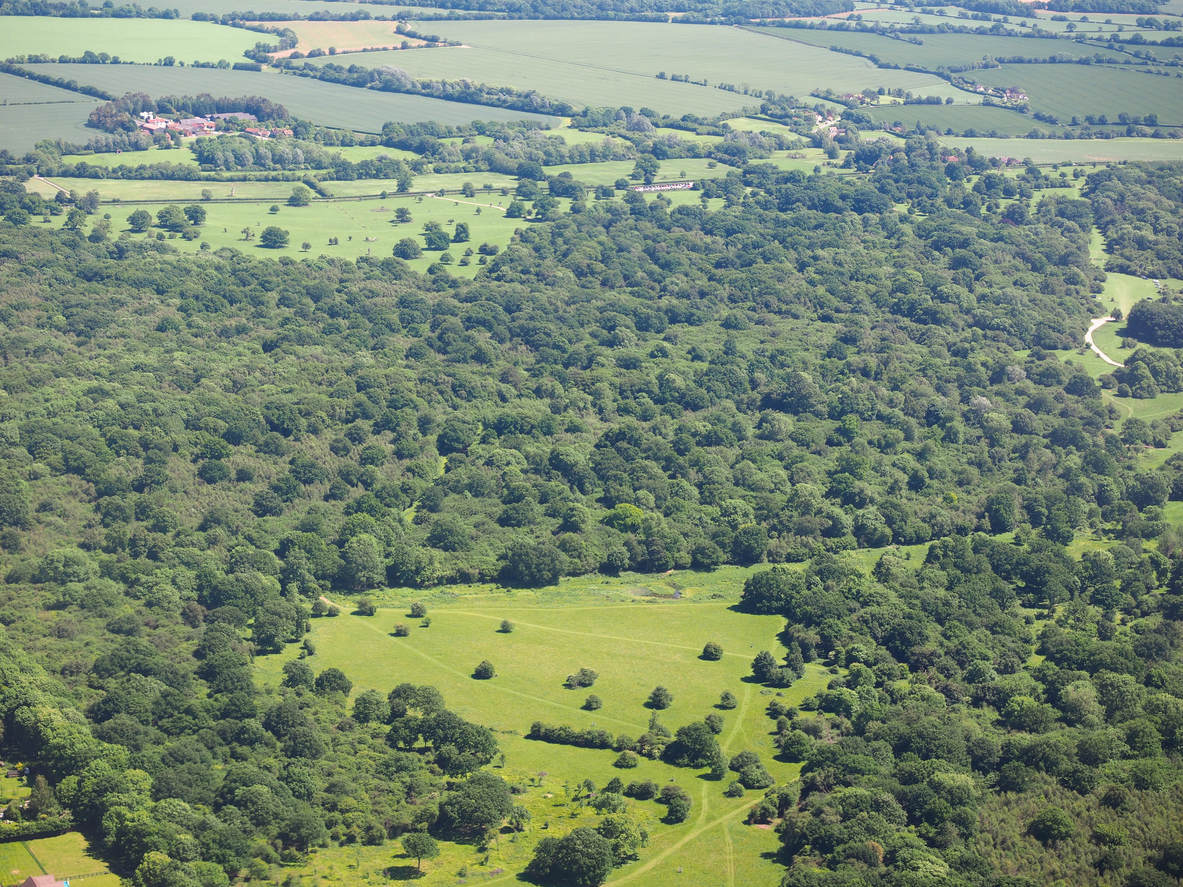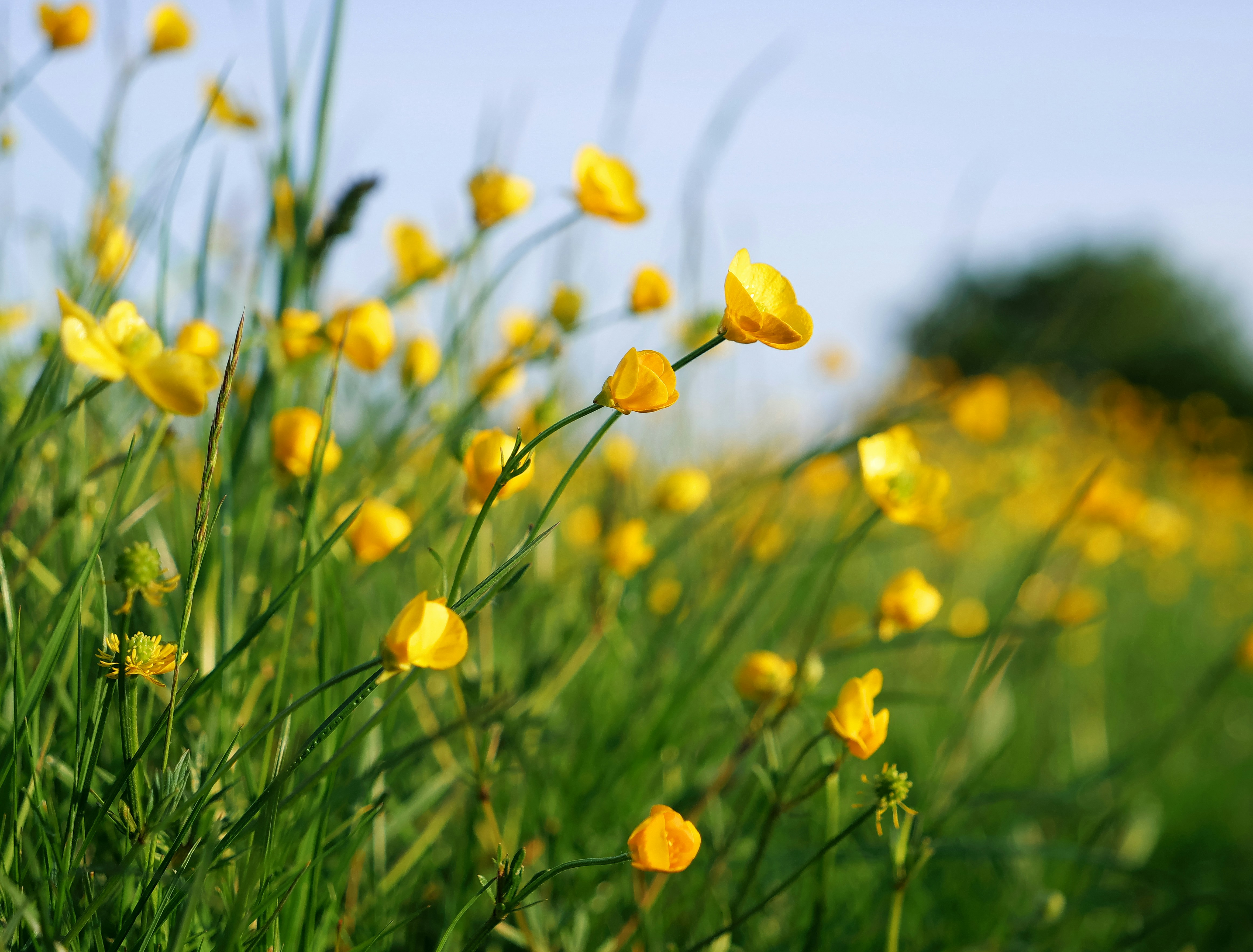Hatfield Forest is an ancient woodland, grassland, and heathland site located between Bishop’s Stortford, Takeley, and Hatfield Heath in Essex. Covering almost 240 hectares, it is managed by the National Trust and has been since it was gifted to them in 1922 by the Houblon family. As one of the Trust's premier properties in the East of England, Hatfield Forest represents an important remnant of the vast medieval forests that once covered this area. With over 40,000 years of habitation and a landscape that has remained largely unchanged for hundreds of years, Hatfield Forest offers visitors the chance to step back in time and experience nature much as previous generations would have done.
Wandering the grassland trails today, you may encounter grazing cattle, veteran oak trees or pollarded hornbeams that are centuries old, Bronze Age barrows, and rare wildlife species that have existed here since these ancient woods first developed after the last Ice Age. As a registered Site of Special Scientific Interest and National Nature Reserve, Hatfield Forest is considered one of the best remaining examples of a Royal hunting forest in Britain. Its mosaic of grassland, woodland, wetland and heath habitats make it an ecologically diverse and enriching place to visit for lovers of the great outdoors.
History and Landscape of Hatfield Forest
Hatfield Forest has a long and rich ecological and human history stretching back over 40,000 years. The landscape holds clues to how nature and people have interacted with and shaped the land over millennia.
Early Human Settlement
Archaeological evidence indicates a human presence in the area as far back as the Mesolithic period after the last Ice Age retreated from Britain. Small bands of hunter-gatherers likely exploited the forests and wetlands for subsistence living. During the Neolithic period around 2500 BC, more settled farming practices began to emerge, with the first woodland clearances occurring to create fields for livestock and crops. Bronze Age inhabitants continued forest grazing and exploitation of natural resources. Several barrows cluster near the woods, suggesting the area held some deeper cultural significance. The construction of burial mounds implies organised communities that set aside this landscape for ritualistic purposes.
Medieval Royal Forest
After the Roman invasion in 43 AD introduced administrative frameworks, Hatfield Forest became subject to Forest Law which reserved landscapes for nobility to hunt deer and wild boar. Normans expanded these hunting territories which were known as medieval Royal Forests. Hatfield’s boundaries can still be traced in parish limits and show it once encompassed over 2,000 hectares. Veteran oak and hornbeam pollards remaining today display the twisted, gnarled shapes resulting from centuries of woodland management for timber and fuel. Regular pollarding allowed sunlight to nourish the underlying grasslands to feed deer. This symbiosis of wood pasture, timber resource and hunting domain upheld Hatfield Forest’s custom-crafted ecology.
The National Trust Era
In the early 20th century Hatfield Forest was purchased by the National Trust, just as remaining wood pasture habitats dwindled under pressure from modern agriculture. Its new stewards carefully upheld longtime practices like pollarding and grazing that maintained the mosaic ecology. Centuries-old trees stand as remnants of Hatfield’s bygone use by Norman kings and commoners alike. Their perseverance is a sign of resilience - of nature’s ability to uphold this forest’s spirit despite immense upheaval over thousands of years. The layers of Hatfield’s landscape - the grassy rides, gnarled old sentinels, coppiced tree stands, pools and meadows - thus tell a complex story of continuity and change; of nature and culture becoming entangled over ages. As an ecological and heritage site, the Forest represents the time-honoured relationship between people and place.
What To Do When Visiting Hatfield Forest
Beyond simply appreciating the ancient woodland environment and diversity of wildlife, Hatfield Forest offers visitors a wide range of recreational activities to enjoy across its 240 hectares of trails, lakes and grasslands.
Walking Trails
A permit from Hatfield’s Visitor Centre provides access to waymarked walking trails showcasing ecological and historical highlights across the Forest’s 240 hectares. Catering to different abilities, outlined routes range from 1.2-kilometre loops to longer 5.5-kilometre hikes. Smooth tracks allow wheelchair and pushchair access. The easy Woodland Trail identifies specimen trees and a butterfly garden. Other paths traverse scenic ponds fringed by bulrushes, follow sculpture trails exhibiting carved wooden sculptures, or track along old parish boundaries. Self-guided trail maps detail flora and relics of Hatfield’s use through the ages. Adventurous ramblers can also freely explore the maze of unmarked footpaths criss-crossing beyond the waymarkers. Through navigation apps, orienteering skills or simply serendipitous wandering, self-forged off-piste routes promise an enriching sense of discovery.
Spring lures visitors to admire carpets of bluebells and anemones illuminating the reborn understory ahead of those first unfurling fiddleheads. Come summer, morning birdsong gives way to buzzing insects floating on dense humid air that drives dogs to wallow in ponds. Autumn pathways swirl with rustling leaves while sunlight streams richer through increasingly bare boughs. Whatever the season, Hatfield’s terrain offers firm dirt tracks, spongy moss beds, slippery boardwalks, thickets of hawthorn and open vistas. Through habitats shaped by ancient rhythms, the Forest Filter renews body, senses and spirit. And as shadows lengthen across trout ponds, wanderers might just feel one with the dappled woods that have stood here for ages.
Horse Riding & Cycling
While many explore Hatfield's expanse on foot via the trails network, cyclists and supervised horse riders can cover more ground along certain routes. Several gaps in the perimeter hedge system, and bridleway entrances, link with gravel tracks winding beneath Hertfordshire's spreading oaks and atop Essex meadows. Meandering along the main rides offers lengthy stretches far from roads—a rare chance to wander at one's own pace through unsullied nature. Certain wide paths feature compacted gravel beds able to withstand regular hoof traffic following London's old drove roads. Though no circular bridle routes exist, long return rides pass between Takeley's timber cottages and grassy meadows still bearing faint medieval furrows. Whether at brisk trots across open plains or relaxed walks under shady copses abuzz with finches, Hatfield caters for most equestrian paces.
Similar fast-riding potential applies for mountain bikers, though cyclists are restricted to waymarked bridleways, well-surfaced trails and driveways. Care should be taken when passing families with young children along tracks, but elsewhere cross-country speed allows lungs to fill with crisp air amid bird calls and rustling wind. Spotting deer, dragonflies, and perhaps a stoat darting across one's path represents bonuses unique to exploring by bike. After working up appetites from country air, horse boxes and cyclists can take respite at picnic tables, tying posts, and the central visitor complex with bike racks and restrooms. While those walking may amble for hours observing minute details of flora and fungi, faster-paced visitors witness broader-brush seasonal changes of tinting boughs or combine galaxy hunting above on clear nights with spotting constellations of fluorescent fungi closer at hand.
Picnics & Relaxation
Beyond hiking trails and family cycle routes, Hatfield Forest reserves plenty of space for unwinding amidst nature. Picnic tables dotting grassy glades and fern-fringed parking zones cater to everything from quick snack breaks to leisurely group lunches with thermal flasks of Earl Grey. Visitors who book special permits can even arrange romantic champagne picnics at secluded forest sites. Sun-speckled benches beside Hatfield’s handsome oaks and shimmering ponds offer perches for peaceful viewing, reading or nature sketching. Packs of children blow off steam across open lawns while dogs sprint circles around dogged owners. More sedate pets simply soak in dappled shade, attuning animal instincts to woodland sounds: a pheasant’s cackle, the squeak of vole or a herd of deer crashing through distant brush.
For the creatively inclined, seasonal event days feature artisan crafts, falconry displays, and garden shows. Occasional open-air theatre productions use the Forest for an atmospheric stage. Armchair adventurers try geocaching treasure hunts with handheld GPS devices. Cub Scout groups tap innate curiosity exploring nature’s elements during woodland sleepovers in tribal teepees. Whether visiting alone in relaxed ambulation or packed itineraries of family fun, Hatfield’s expansive grounds welcome all in recreation.
Visiting Hatfield Forest: Practical Information
Covering over 238 hectares between Essex villages and the Hertfordshire border, Hatfield Forest represents an opportunity to lose oneself in a landscape seemingly unchanged since medieval times. Managed by the National Trust as a vibrant nature reserve and registered Site of Special Scientific Interest, it promises captivating scenery and ecology easily accessible from London and Cambridge.
- Visitors travelling by car can locate Hatfield Forest’s main entrance and car park off Bush End Road (B184) near the town of Bishop’s Stortford. Large coaches should approach Stortford Road and use the Overflow Car Park. Rail arrivals at Bishop’s Stortford train station can catch the number 13 bus service to the Forest Plaza entrance.
- Hatfield Forest prides itself as an unspoilt oasis with minimal visible infrastructure. Simple pathways with some contact with mud and uneven ground reflect its ethos of preserving the area’s organic character. As such, suitable all-weather clothing and sturdy footwear are recommended. Visitors should also come equipped for variable weather and biting insects during warmer months.
- Entry pricing is managed by the National Trust, with admission charges ranging from free entry for members to £15 for a family. Season tickets, gift aid rates and concessions are available. Visitors solely accessing Hatfield Forest’s cafe, shop or children’s play area are not required to pay an entrance fee.
- The central Visitor Centre contains useful facilities for guests, including toilets, a coffee shop, plant sales, a gift shop and an exhibit detailing the property's ecology. The building itself blends into the landscape with curving wooden walls and a vegetation-covered roof emulating local materials and nature.
- Families will appreciate venues like the nearby children’s play space simply named Stickland. Featuring structures woven from chestnut wood and willow to engage imagination, it epitomises the Forest’s ethos of handcrafted, natural fun. Seasonal trails and activity sheets also provide entertainment for kids learning about nature.
- Leashed dogs are allowed in much of Hatfield Forest but are banned from fenced deer areas and Stickland play space for wildlife protection. Visitors should also take care of grazing animals like cattle and horses and give them plenty of space. Camping is prohibited, however, some special event accommodations may be available upon request.
Facilities at the Hatfield Forest National Trust Site
As a property of the National Trust, Hatfield Forest provides a range of onsite facilities to improve the experience for visitors of all interests and needs. Designed not to detract from the ancient woodland atmosphere, these amenities blend into the surroundings while offering refreshments, information and family-friendly attractions.
The Visitor Centre
At the heart of Hatfield Forest lies the sleek Visitor Centre - an architectural emblem of sustainability featuring locally sourced materials like sweet chestnut and lime render. Its curving wooden walls and vegetation-smothered roof emulate both local materials and nature herself. Inside, families, couples, and solo explorers survey upcoming activities on a chalkboard or use amenities. The eco-friendly building recycles its wastewater through a reedbed filtration system - enabling toilet flushing and outdoor taps without taxing municipal works. Oak boards and lime plaster continue the theme of local, renewable construction materials with minimal carbon footprint. As visitor hubs go, this one treads lightly on the land.
Inside, the café area proffers rest and sustenance for wandering bodies and minds. Seasonal light meals, home-baked treats, hot drinks, and picnic boxes issue forth for discerning palettes. Ingredients come from ethical, ecologically-aware growers nearby, with vegetarian, vegan and gluten-free options always available. Visitors can fuel up while soaking up tranquil views through floor-to-ceiling windows. Shelves also brim with nature-related books, cards and handcrafted gifts echoing traditional rural trades - perfect for memorable keepsakes or posting home. Before embarking deeper into ancient stands of oak and hornbeam, the Visitor Centre thus welcomes guests with exemplary facilities curated in harmony with the natural essence of Hatfield Forest.
Children's Play Area
A five-minute stroll from the Visitor Centre reveals Stickland - four fenced acres where kids transform into adventurers, warriors and fairytale heroines. Miniature timber structures woven from chestnut poles and willow stems inspire games of make-believe within these wooded wonderlands. Seasonal trails with tiny signs offer suggested voyages of natural discovery. Leafy forts dare would-be Robin Hoods to perfect their archery using outdoor toy sets. Mossy stone circles kindle a child’s fantasy of druidic rituals with mystic raven familiars. Fairy treehouses elicit magical secrets from inquiring minds. This whimsical playground embodies perhaps what the Forest signifies best - a return to imaginative innocence through unfettered immersion in nature.
Nearby outdoor ping pong and table tennis tables promise vigorous family contests amidst birdsong. Just beyond, an expansive open lawn beckons everything from picnic blankets to games of tag, frisbee throwing, or attempting cartwheels and handstands. Childish giggles and freed spirits meld into lemon-yellow afternoon light above swaying oak boughs. For when little ones grow weary or parents require hot drinks, the Visitor Centre with baby changing facilities sits just across the footbridge. Yet children may protest leaving the fantasy realm of Stickland too soon. The durable structures rooted in soil and seasons enable adventures limited only by innocent minds, awaiting further exploration on the next visit.
Exhibition Centre
Naturalists seeking insights into Hatfield Forest’s ecology can find scientific revelations inside the Visitor Centre’s permanent exhibition space. Backlit panels and interactive displays showcase the biodiversity relying on plants, fungi, and invertebrates - the tiny engines powering these ancient woodlands. Hands-on collections house everything from mammal skulls to owl pellets bursting with vole bones for amateur biologists to examine. Touch tables present reptile skin, seashells, and mineral samples beneath microscopes connected to video screens. Hunting for millipedes in a tank of leaf litter engages competitive flare. Q&A memory games about native species test seasoned knowledge while rewarding correct answers.
The exhibit also profiles how organisms connect in complex food webs: blue tits feasting on hatching moth larvae, badger cubs eating earthworms, and bracket fungi decaying fallen branches. Dioramas model the habitat layers occupying niches from windswept treetops down through moist moss clothing roots. Together they illustrate the ecological magic sustaining Hatfield’s diversity. An adjoining shop stocks field guides to forest flora and fauna alongside nature writing reflecting Hatfield’s landscapes. Locally crafted ornaments, eco-printed scarves, honey products and dressing-up costumes make charming keepsakes for young explorers. Sales support arts programming and environmental education - spreading inspiration beyond the Forest that nourished it.

Let us know you agree to cookies
We use marketing, analytical and functional cookies as well as similar technologies to give you the best experience. Third parties, including social media platforms, often place tracking cookies on our site to show you personalised adverts outside of our website.
We store your cookie preferences for two years and you can edit your preferences via ‘manage cookies’ or through the cookie policy at the bottom of every page. For more information, please see our cookie policy.
